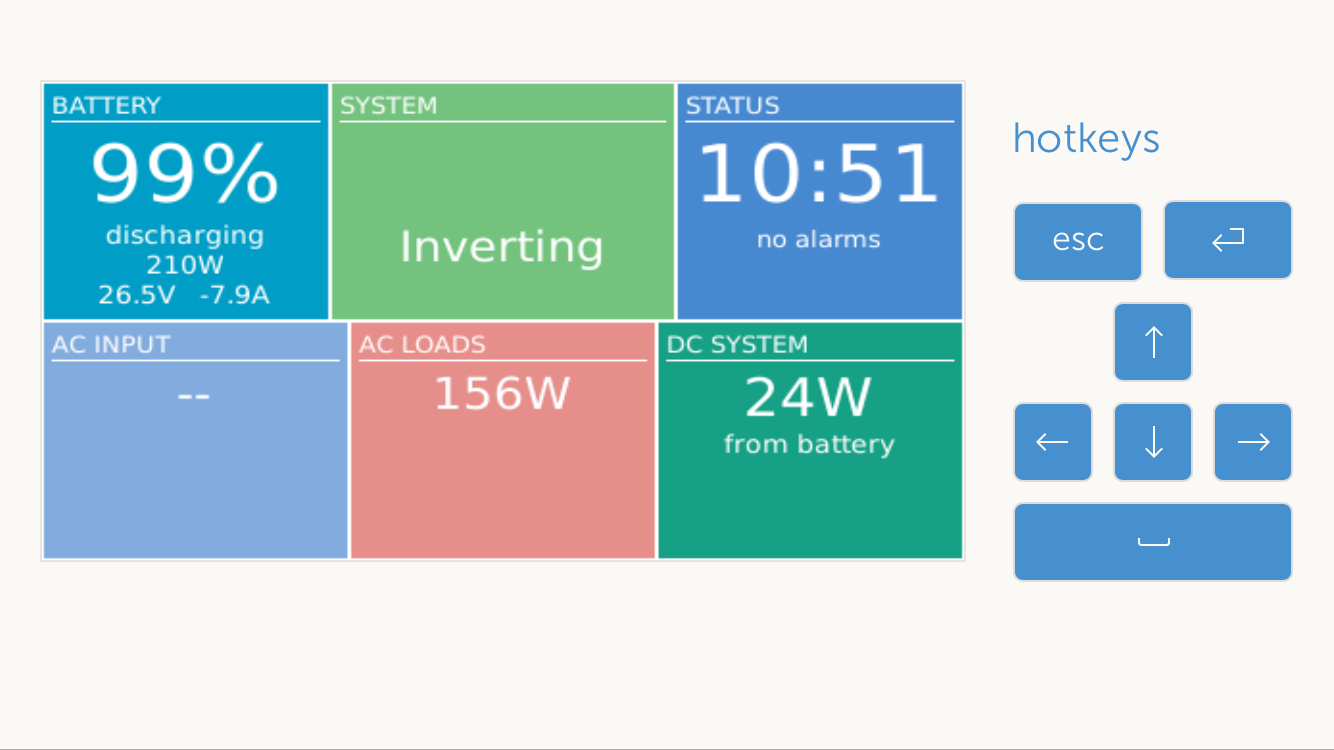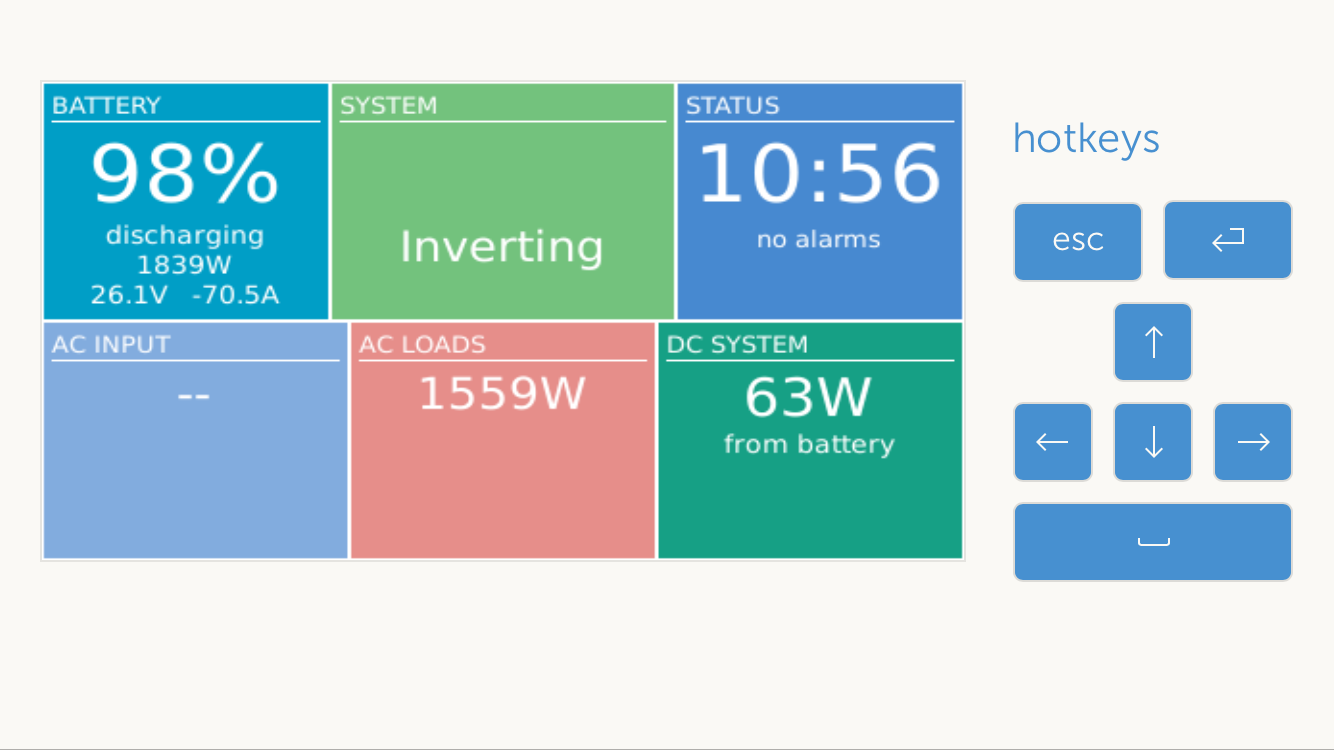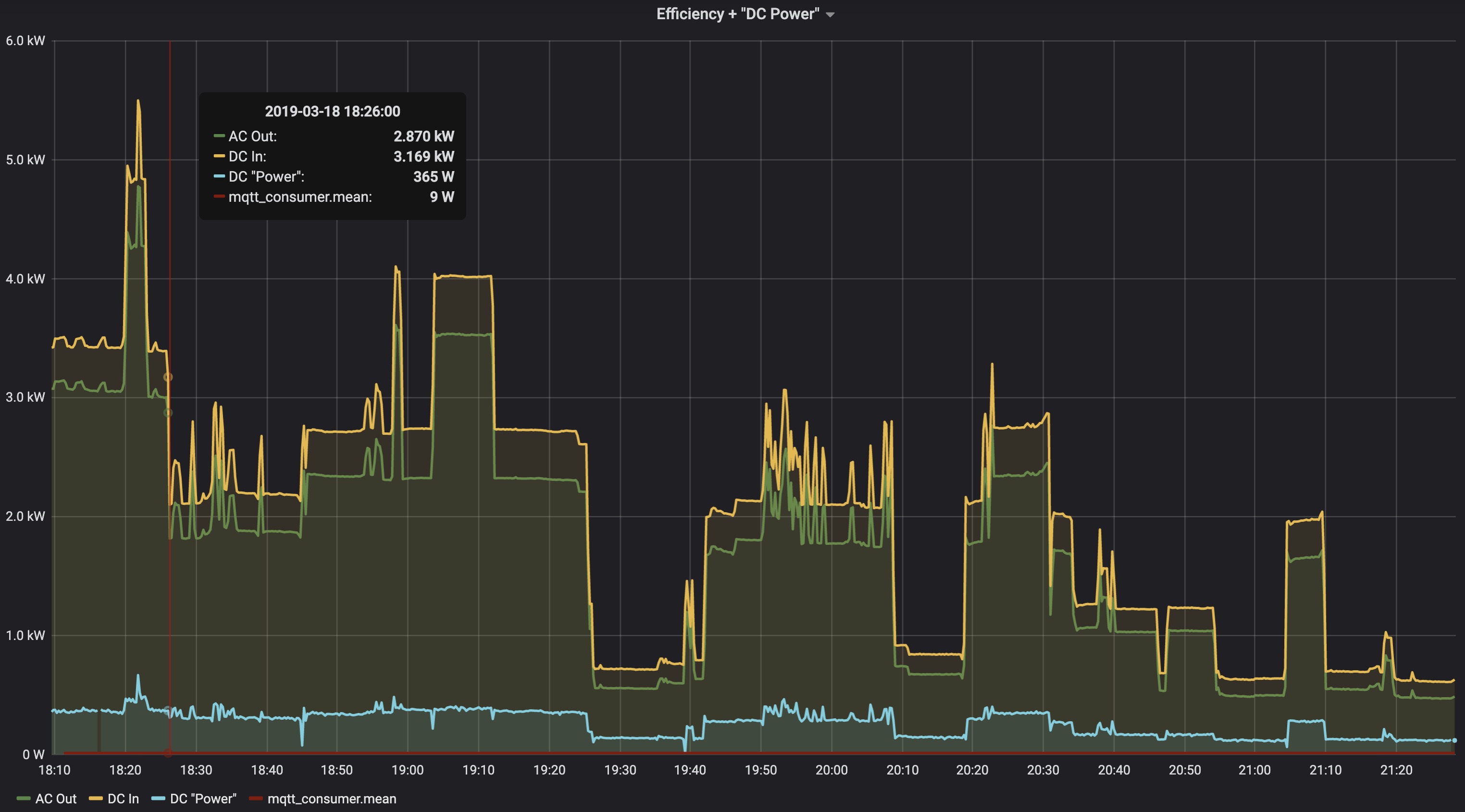When I had my Multi, the indicated AC loads were always within reasonable watts of actual load.
But once I installed my Quattro, I'm noticing a fairly constant difference of around 20%.
I have "has DC system" enabled and it seems to try and fudge that difference mathematically as DC system draw, even though the Quattro is the only consumer in circuit.
The current drawn, as shown on the BMV, is in lockstep with the BMS's reported current draw.
For example, right now the BMV is showing ~300W drawn from the batteries (confirmed by BMS).
The CCGX is showing AC loads of 180W, and a constantly varying number "DC System" of 20-50W, with the rest just... unaccounted for.
With higher loads (>50A 24V DC) the difference is somewhat closer. So a 1800 W draw shows 1200W AC loads, some variation of 100-300 "DC system" with the rest unaccounted.
Again, there is NO other DC consumer other than the Quattro.
Also based on math, that 1200 load is not right at all.
I considered the difference between resistive vs inductive loads -and with the lower draw example that might be true; since we have a lot of "wall-warts" for phone, computer, mifi, and other misc AC/DC converters.
But with the higher example, I simply turned on a 1500W kettle.



